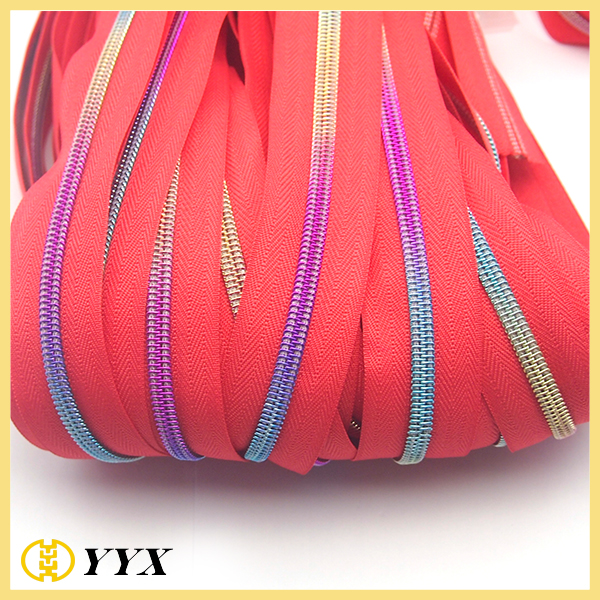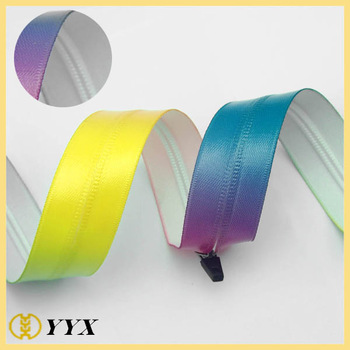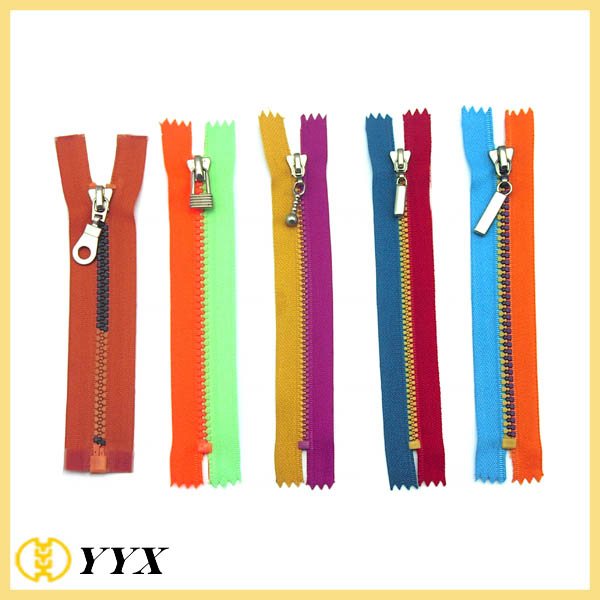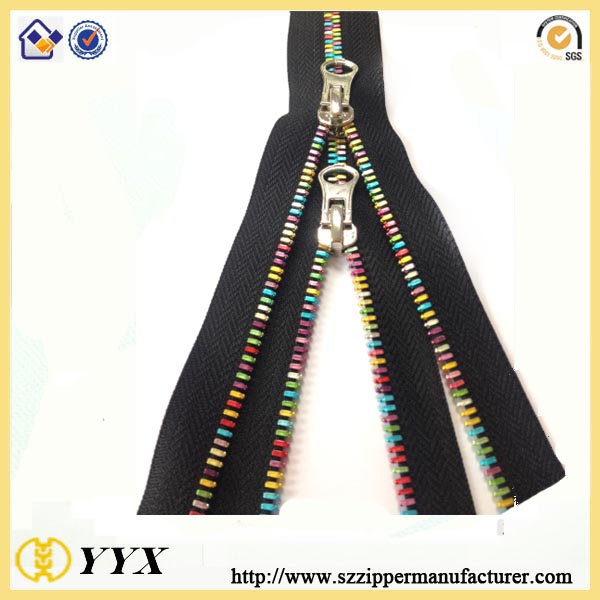Secondary use of the ink fountain film For Heidelberg offset machines with the CPC system, the ink fountain blade is replaced by a plastic plate or ink fountain film. The ink fountain is generally used for about 40 hours. In the printing process, usually the ink fountain film is discarded after being used once. The discarded ink film is used only at one end, and the other end is not used, resulting in a great waste of materials. Then the used ink fountain film is used once. The installation method of phase change of the ink fountain film is used once. The effect is very good after use. The specific methods are as follows:
1. Clean the replaced waste toner;
2. Before installation on the machine, in order to facilitate the installation, the original crease at the end of the ink fountain blade used for the first time shall be deepened, and the original crease at the other end of the ink fountain clip shall be relieved;
3. When the machine is installed, the ink creel clip lever is deepened in the ink creel clip end, and the reduced end of the crease is pushed between the ink fountain and the ink fountain roller, and the mounting is completed.
After this operation, the service life of the ink fountain film is prolonged, the utilization of the material is improved, and the printing cost is reduced. Moreover, this method is simple and convenient, and interested counterparts may wish to try.
J4104 Machine Overprinting is not allowed in one case. Our factory has a J4104-type melter, often printing four sheets of paper, overprinting is very accurate. Once, when printing eight sheets of paper, a fault that occurred on one side of the process but was not allowed on the other side during overprinting.
After checking the squeezing force of the transfer paper, the pressure of the impression cylinder, the backing of the front gauge, the time of holding the paper, and the timing of paper stabilization, no problems were found. Considering that the overprint is very accurate when printing the four-sheet printing paper, when printing is adjusted to letter-printing paper, the overprinting is inaccurate. Therefore, it should be a problem that arises during the adjustment, and the position of the front gauge and the paper feeding portion are mainly adjusted during the adjustment. Observing the paper feeding section, we found no problems. After carefully observing the paper and the rules, we found that: After the paper is in the front position, the paper arrives at the front gauge at a certain speed, and there is a side rule and a front rule to control the paper, which is more stable; On the other side, there is only one front gauge to control the paper, so it is not very stable. When the side gauge pulled the paper, the paper trembled slightly. Because of this, there is an irregularity of about 1 mm on the other side of the side scale. The reason for this is that the distance between the two front gauges is 350mm and 150mm. The front side of the paper B (that is, the side of the mouth) is as much as 440mm. Therefore, whether you use the outer or middle two front gauges, you cannot satisfy the condition of e=(0.2-0.25) times B. Therefore, the paper positioning effect is not ideal, which directly affects the accuracy of registration. For this reason, we have taken the following measures:
First of all, print the open paper with the middle two front rule. When the paper has reached the front gauge and the side gauge has not yet drawn the paper, the front gauge should be located as far as possible in the middle of the edge of the paper, ie e should be equal to e as much as possible.
Secondly, the distance g from the side gauge to pull the paper is absolutely controlled within 6mm.
Finally, reduce the speed of printing, and make full use of the auxiliary paper stabilizing effect of the brush and glass ball.
After these measures are taken, the registration error is basically controlled at about 0.1 mm, achieving an ideal printing state and ensuring the printing quality.
J4104 type offset printing machine troubleshooting example using J4104 printer printing 300g/m white paper four-color wine box, found in the first color yellow printing in front of the individual paper under the rule is not in place, when printing the second color Most papers are not overprinted, increasing the product's product rate.
Stop and move the paper to the front gauge. When the front gauge is positioned exactly, the front edge of the paper is about 14mm away from the front gauge. Then, loosen the locking screw on the flange and manually rotate the paper feed to make the paper front gap. Front regulated about 5mm distance, locking screw, boot print. Imprinting has not been eliminated. It was observed that the white paper was wavy, with the paper front slightly upturned, the manual car was turned, the paper feeding nozzle had sent the paper to the take-up roller, and the take-up roller had not been lifted yet to allow the paper to adjust the drive side of the take-up roller. The rounds have made it impossible for political parties and work machines to print or overprint prints. Therefore, when the side profile is lifted, the starter finds that the paper has a pause in the conveying process when the receiving paper is opened and the paper is fed. At this time, the amplitude of the transmission chain is large because the transmission chain is too loose. The head sucks and sends the sudden wheel into the protruding surface and the receiving chain opens the teeth to create an overcast country. After tightening the transmission chain, the paper is returned to normal and the paper is just in place. Put the sideways moments on the pull-down paper, and then the front gauge paper near the side gauge edge is not in place. The reason is that the white paper has a wave, the edge of the paper that has entered the side gauge has tilted, and the pull paper wheel does not touch the paper slightly. Regulatory position. Shutdown Adjust the pull time so that it pulls paper at the same time that the paper is pulled in place. Boot printing, overprinting accuracy, failure was ruled out.
Mixed use of oil and water When rubbing the rubber, there are some things that cannot be wiped off with gasoline on the rubber roller. If you add some water to the gasoline and wipe it with a mixture of steam and water, you can easily wipe off the dirt.
2. When changing the color eraser roller, if a little water is added to the gasoline and the mixture of gasoline and water is sprinkled on the rubber roller, the rubber roller can be easily wiped clean.
3. After cleaning the roller with a washing device, it was found that some of the dirt in the ink tank was not clean. If you put some water in the tank before washing the rollers, the dirt can be easily wiped clean.
The solution to the failure of the rotary press run-off is determined by the structure of the rotary press itself, which determines the waste of raw materials, especially paper, when printing the product, and the accuracy of the financial and mechanical parts, the excessive printing or folding, and the production of the product. Lu rate is large.
Now we will list the methods for solving the problem of instability of the web page folding machine.
We take the northerner JJ204 who entered the factory in 1994 as the research object, and mainly solve the problem of unstable one and two fold when the sixteen fold folding page is used.
First solve the problem of instability. Adjust the continuously variable speed of the paper-feeding mechanism so that the rotation speed of the paper-feeding roller is slightly lower than that of the hemp roller at the folding machine section. Adjust the printing pressure so that the pressure in the first group is slightly lower than the pressure in the second group. The pressure of the high-speed hemp roller presses the paper rollers, and the angle of the triangle plate reaches the standard position (65 degrees and 31 minutes). Under the premise of not rotting the paper, the paper is tight. The roller slightly presses this, which makes the paper tape in the printing less jittery to facilitate folding. After several adjustments, a fold is basically stable.
Under the premise of a stable stability, strict adjustments were made to the transfer time of the three rollers, the tension of the transmission belt, and the pressure of the brush. After the machine was turned on, the machine speed was slightly higher than 14,000 rpm. The mark was off and the two-fold mark was still unstable.
Later, we put the paper roller on one end of the hemp roll with a flower knife, and the knife edge was just on the center line of the two-folding mark. The drive test effect was obviously different. The JJ204 machine speed of 5 years was used to reach 18,000 rpm. The folding mark basically remains unchanged. Later, the groove line was engraved in the position where the knife was installed, and the test was printed for two days. The production per class was greatly improved.
After the test was successful, we quickly promoted the use of this product to the other machines in the workshop. The new and old equipment were effective after use.
The problem of oil leakage in offset printing presses and the leakage of oil from printing presses are a headache for manufacturers. Oil leakage not only pollutes the sanitation of the workshop but also causes waste. Most offset presses use rain-type oil supply (host part). After a few years of use of the machine, oil seals where the shaft comes into contact with the wall plate and the cover will deteriorate and cause oil leakage. General oil leaks are:
1) Exposed water and ink roller adjustment and control parts on the outer cover and outer cover;
2) Ink roller, roller shaft and its contact with the wall plate;
3) Exposed oil injection holes and wall plate process holes.
There are two ways to deal with oil spills, blocking and sparse. Plugging, which is the source of plugging oil leakage, is to drain the oil that has already been discharged, so as not to pollute the product environment. Sparse is a supplement to plugging, because plugging in some areas is very difficult (such as the main chain roller and roller shaft worn on the oil, replace the wall plate to be replaced).
Specific treatment:
1) Check the location of oil leakage, and the damaged oil seal that can be easily replaced should be replaced with new ones. If the outer cover and the wall plate are not sealed properly, remove the cover and re-apply the sealant. There should be no oil spillage around the oil pan at the bottom of the machine, and the overflow area should be welded.
2) Make an easy-to-use oil bottle and suck out any excess oil at any time. (Finish)
Rainbow Zipper :
Rainbow zipper(colorful zipper), a Special Zipper branch, doesn't like other Zipper classification, this Customized Zipper, can be any of the Nylon Zipper , Metal Zipper or Plastic Zipper. What the different from other normal Zippers is the teeth color or tape color. Customize Zipper can be multi-colors with all colors combination. This Zipper is rich and colorful, so it satisfied someone who love their clothes or handbags to be colorful and good looking. The price of Rainbow Zippers will be higher than single Color Zipper, at the same time, the minimum order quantity can also be large than normal Zippers.




Specification:
Custom Zips Type: Nylon Zipper, Metal Zipper, Plastic Zipper all available
Size: 3# 4# 5# 8# 10#
Material: Polyester Tape + nylon, brass and delrin for choice.
Color: all colors mixed tape or teeth
End Type: Close End, Open End, Long Chain
Rainbow Zippers,Customized Zippers,Customized Zipper,Customize Zipper,Custom Zips
Shenzhen Yiyixing Zipper Manufacture Co.,Ltd , https://www.nicekeychain.com